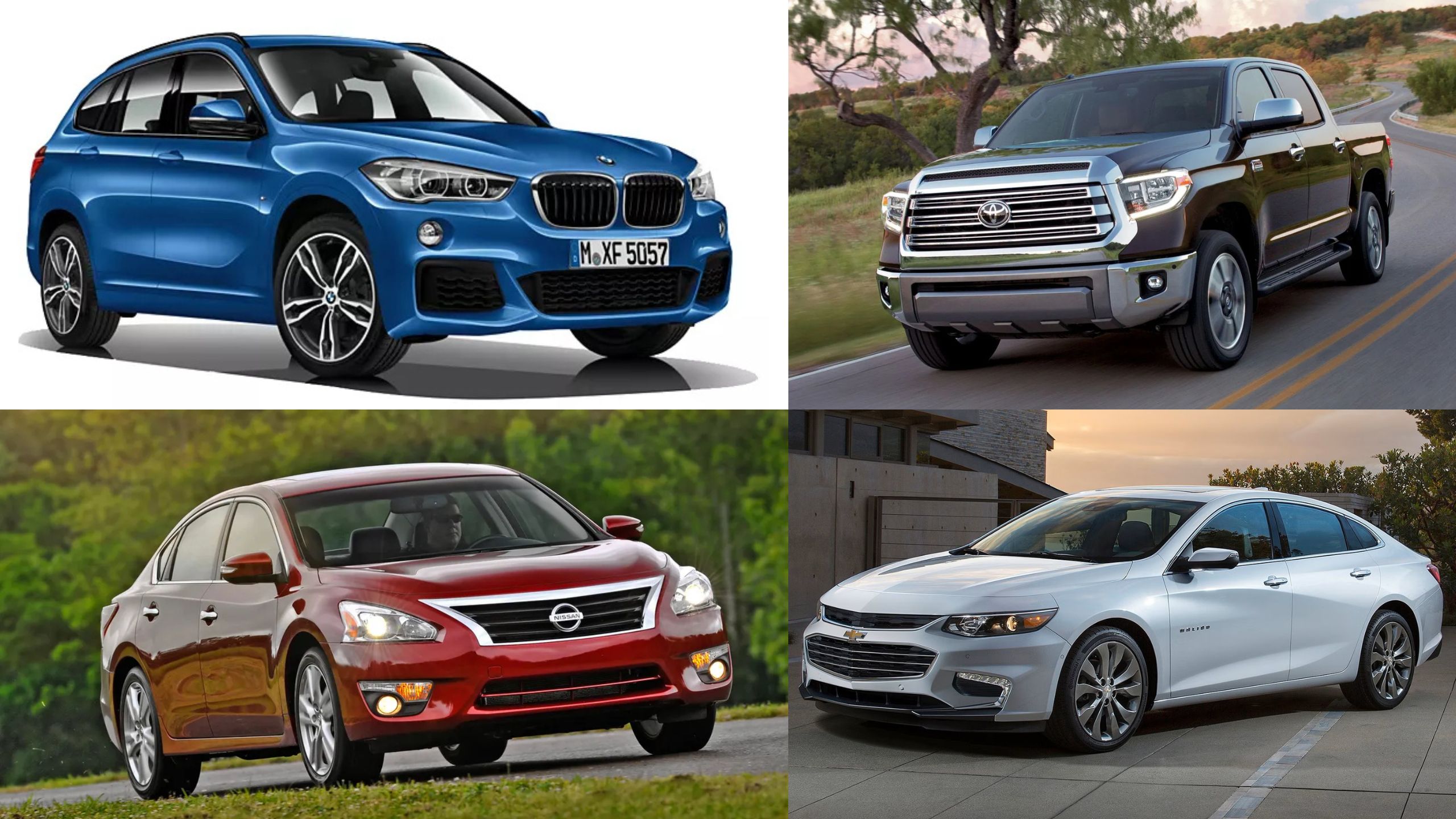Crash tests are a crucial part of vehicle development, ensuring that cars meet safety standards and protect occupants in the event of an accident.
However, not all vehicles pass these tests on their first attempt. Some cars have failed crash tests so significantly that they required complete redesigns to address safety concerns.
These redesigns often involve structural reinforcements, improved safety features, and advanced technologies to enhance crashworthiness.
In this article, we will explore ten cars that had to be redesigned after failing crash tests. Each of these vehicles faced significant safety issues that necessitated major changes to meet safety standards and protect occupants.
By examining these cases, we can understand the importance of rigorous safety testing and the continuous efforts of manufacturers to improve vehicle safety.
Whether you’re a car enthusiast or a safety-conscious driver, these stories highlight the critical role of crash tests in the automotive industry.
1. Ford Explorer (1991)
The Ford Explorer, first introduced in 1990, quickly gained popularity as a versatile and practical SUV. However, the 1991 model faced significant safety issues, particularly in rollover accidents.
The vehicle’s high center of gravity and narrow track width made it prone to tipping over, leading to numerous accidents and fatalities.
These design flaws were so severe that they necessitated a complete redesign to address the safety concerns and ensure the vehicle’s crashworthiness.
The redesign of the Ford Explorer included several critical changes. First and foremost, the track width was widened to improve stability and reduce the likelihood of rollovers.
The vehicle’s center of gravity was also lowered, further enhancing stability and handling. Additionally, Ford introduced an improved suspension system to better manage the vehicle’s weight distribution and minimize the risk of tipping over during sharp turns or sudden maneuvers.
To further enhance safety, the redesigned Explorer was equipped with advanced safety features such as electronic stability control (ESC) and improved braking systems.
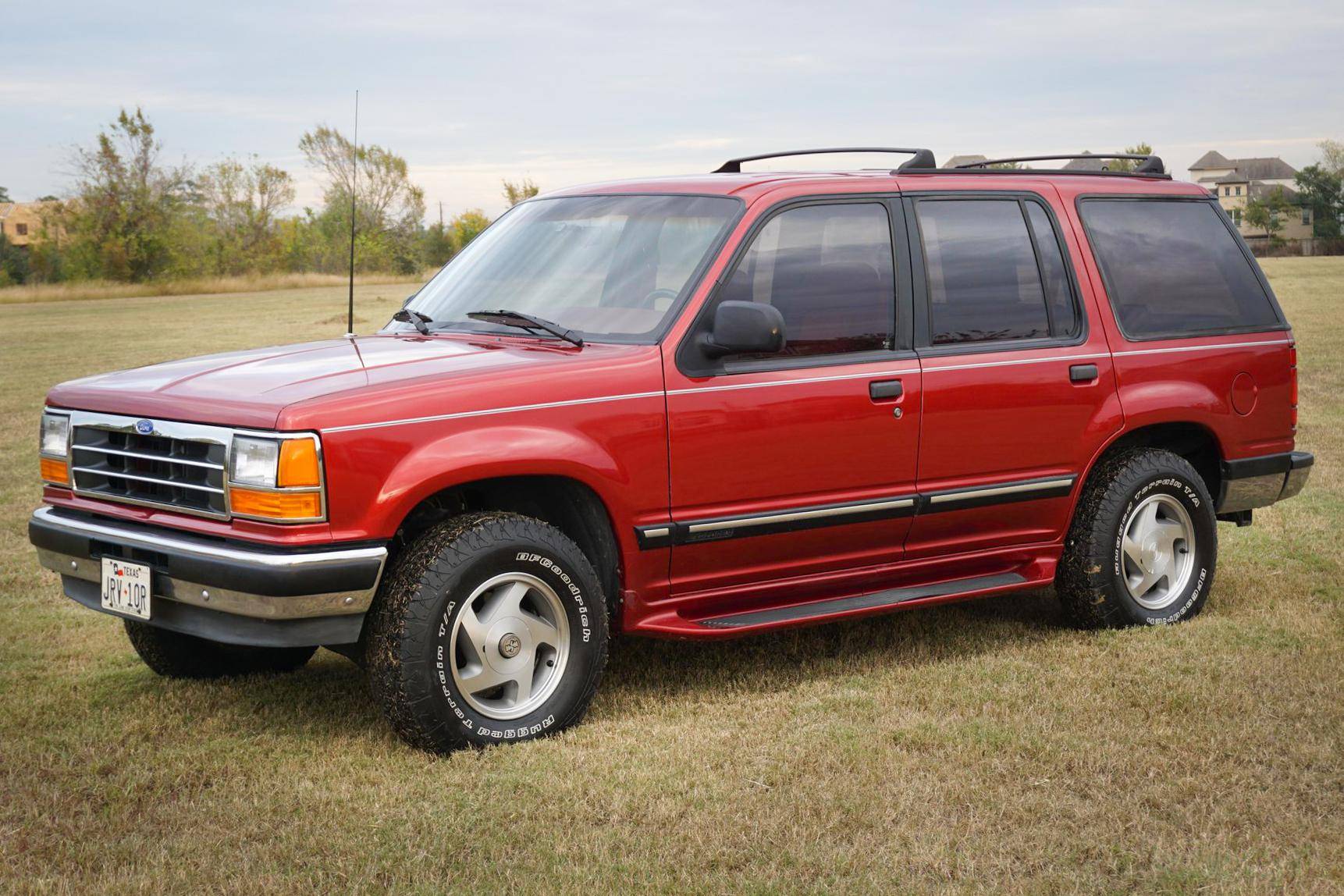
ESC helps maintain vehicle stability by automatically adjusting braking and engine power if it detects a loss of control, thus preventing rollovers.
The braking system was upgraded to provide more reliable and consistent stopping power, enhancing vehicle control.
The structural integrity of the Explorer was also reinforced. High-strength steel was used in critical areas to improve the vehicle’s ability to withstand impacts and protect occupants.
The redesign included the addition of side airbags and reinforced roof structures to provide better protection in the event of a rollover accident.
The redesigned Ford Explorer underwent rigorous testing to ensure its safety and reliability. The improvements made to the vehicle were well-received, and the Explorer regained consumer confidence.
It continued to be a popular choice among SUV buyers, setting a precedent for other manufacturers to prioritize safety and address design flaws that could compromise occupant protection.
The Ford Explorer’s redesign was a significant step forward in vehicle safety.
The combination of structural enhancements, advanced safety features, and improved stability ensured that the Explorer provided a safer and more reliable driving experience for its occupants.
2. BMW X1 (2016)
The BMW X1, a premium compact SUV, encountered significant safety challenges during crash tests in 2016.
The vehicle’s automatic braking system failed multiple dummy tests, scoring zero in pedestrian safety, raising concerns about its ability to protect both occupants and pedestrians in the event of a collision.
These shortcomings highlighted the need for immediate attention to enhance the vehicle’s safety features and crashworthiness.
To address these safety issues, BMW undertook a comprehensive redesign of the X1. The primary focus was on improving the automatic braking system, which involved incorporating advanced sensors and software to enhance its performance and reliability.
This upgrade aimed to ensure that the braking system could effectively detect obstacles and pedestrians, thereby reducing the risk of collisions and improving pedestrian safety.
Additionally, the structural integrity of the X1 was reinforced to provide better protection for occupants during high-impact collisions.
High-strength materials were used in critical areas of the vehicle’s frame to enhance its ability to absorb and dissipate impact forces.
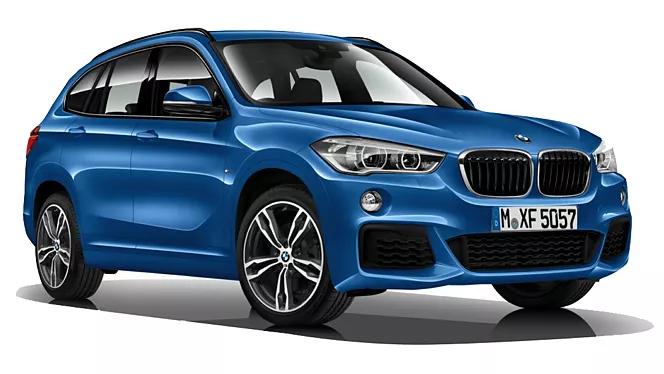
This reinforcement helped maintain the integrity of the passenger cabin, reducing the risk of injuries to occupants in the event of an accident.
The redesigned BMW X1 also saw the introduction of advanced safety features such as additional airbags and enhanced seatbelt systems.
These features worked in tandem with the reinforced structure to provide comprehensive protection for all occupants.
Side curtain airbags were added to protect the heads and upper bodies of passengers in the event of a side impact or rollover.
The improved safety features and structural enhancements were rigorously tested to ensure their effectiveness.
The redesigned BMW X1 successfully passed subsequent crash tests, earning high safety ratings and restoring consumer confidence in the model.
The improvements made to the X1 underscored the importance of advanced safety technologies and the need for continuous innovation to enhance vehicle safety.
The BMW X1’s redesign addressed critical safety concerns and transformed the vehicle into a safer and more reliable compact SUV.
The combination of improved braking systems, structural reinforcements, and advanced safety features ensured that the X1 provided better protection for both occupants and pedestrians, making it a top choice for safety-conscious buyers.
3. Ford Escape (2018)
The 2018 Ford Escape faced significant safety issues during crash tests, particularly in front-seat passenger protection.
The front cabin showed considerable deformation upon impact, which could lead to severe injuries for passengers.
These shortcomings highlighted the necessity of stricter safety testing for mass-market vehicles and prompted Ford to take immediate action to address the safety concerns.
To improve the Escape’s crashworthiness, Ford undertook a comprehensive redesign of the vehicle.
The primary focus was on enhancing the structural integrity of the front cabin. This involved reinforcing critical areas of the frame with high-strength materials to better absorb and dissipate impact forces.
The goal was to reduce cabin deformation and protect occupants from serious injuries in the event of a collision.
In addition to structural reinforcements, Ford introduced advanced safety features to the redesigned Escape.
The vehicle was equipped with additional airbags, including side curtain airbags that deploy in the event of a side impact or rollover.
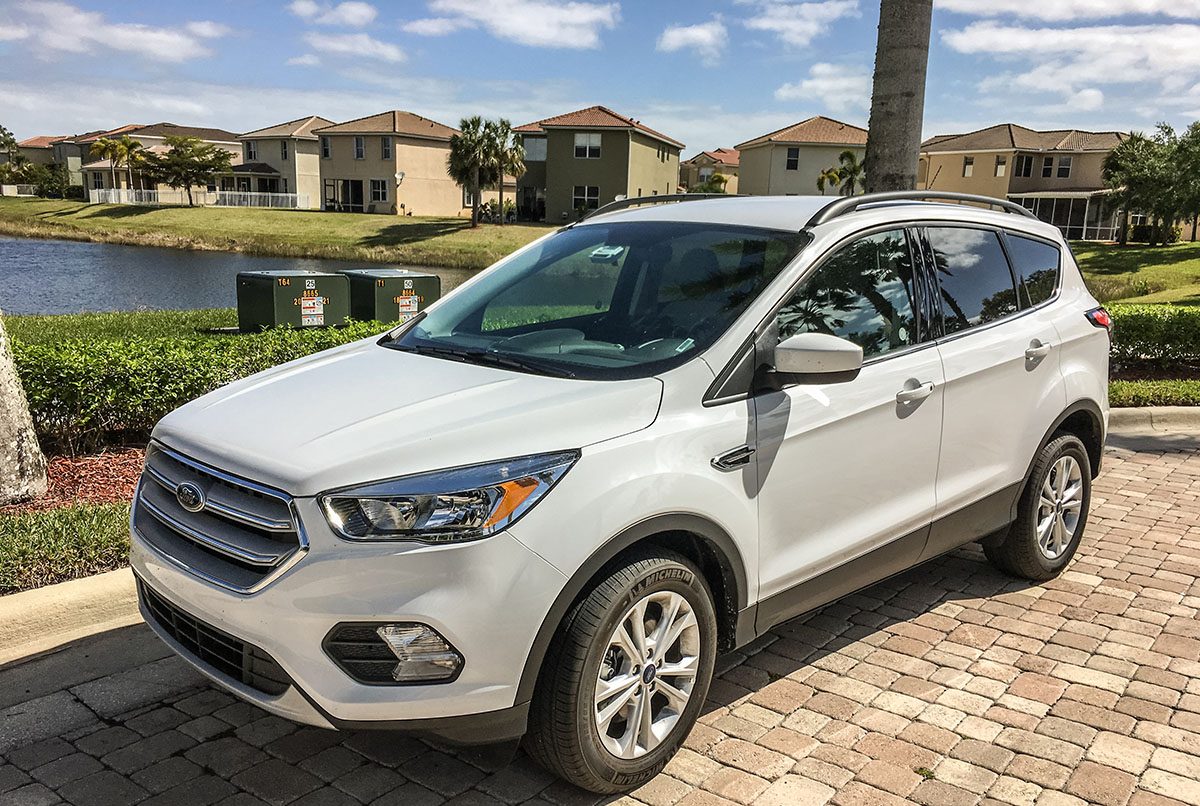
These airbags provided critical protection for occupants’ heads and upper bodies, reducing the risk of serious injuries.
The redesigned Escape also featured enhanced seatbelt systems with pre-tensioners and load limiters.
These systems helped keep occupants securely in place during a collision, reducing the risk of injuries caused by excessive movement.
The seatbelt pre-tensioners automatically tightened the belts upon detecting a collision, while the load limiters gradually released the tension to prevent excessive pressure on the chest.
Furthermore, the redesigned Escape included advanced driver assistance technologies to enhance safety.
Features such as adaptive cruise control, lane-keeping assist, and automatic emergency braking were introduced to help prevent accidents and mitigate the severity of collisions.
These technologies provided timely warnings and took corrective actions if necessary, enhancing the driver’s ability to avoid potential hazards.
The improved safety features and structural enhancements were rigorously tested to ensure their effectiveness.
The redesigned Ford Escape successfully passed subsequent crash tests, earning high safety ratings and restoring consumer confidence in the model.
The improvements made to the Escape underscored the importance of addressing safety concerns and continuously enhancing vehicle design to protect occupants.
The Ford Escape’s redesign significantly improved its crashworthiness and made it a safer choice for consumers.
The combination of structural reinforcements, advanced safety features, and enhanced seatbelt systems ensured that the Escape provided comprehensive protection for its occupants, making it one of the best-selling crossovers in the U.S. market.
4. Toyota Tundra (2019)
The 2019 Toyota Tundra faced significant safety issues during crash tests conducted by the Insurance Institute for Highway Safety (IIHS).
The truck performed poorly in tests conducted at 40 mph, leading experts to deem it a high-risk vehicle with low recommendations.
The Tundra’s structural weaknesses and inability to properly protect passengers in high-impact crashes were alarming, prompting Toyota to undertake a comprehensive redesign to address these safety concerns.
To improve the Tundra’s crashworthiness, Toyota focused on reinforcing the vehicle’s frame and cabin structure.
High-strength materials were used in critical areas to enhance the truck’s ability to absorb and dissipate impact forces.
The goal was to minimize cabin deformation and protect occupants from serious injuries in the event of a collision.
The reinforced structure also helped maintain the integrity of the passenger compartment, providing a safer environment for occupants.
In addition to structural reinforcements, Toyota introduced advanced safety features to the redesigned Tundra.
The vehicle was equipped with additional airbags, including side curtain airbags that deploy in the event of a side impact or rollover.
These airbags provided critical protection for occupants’ heads and upper bodies, reducing the risk of serious injuries.
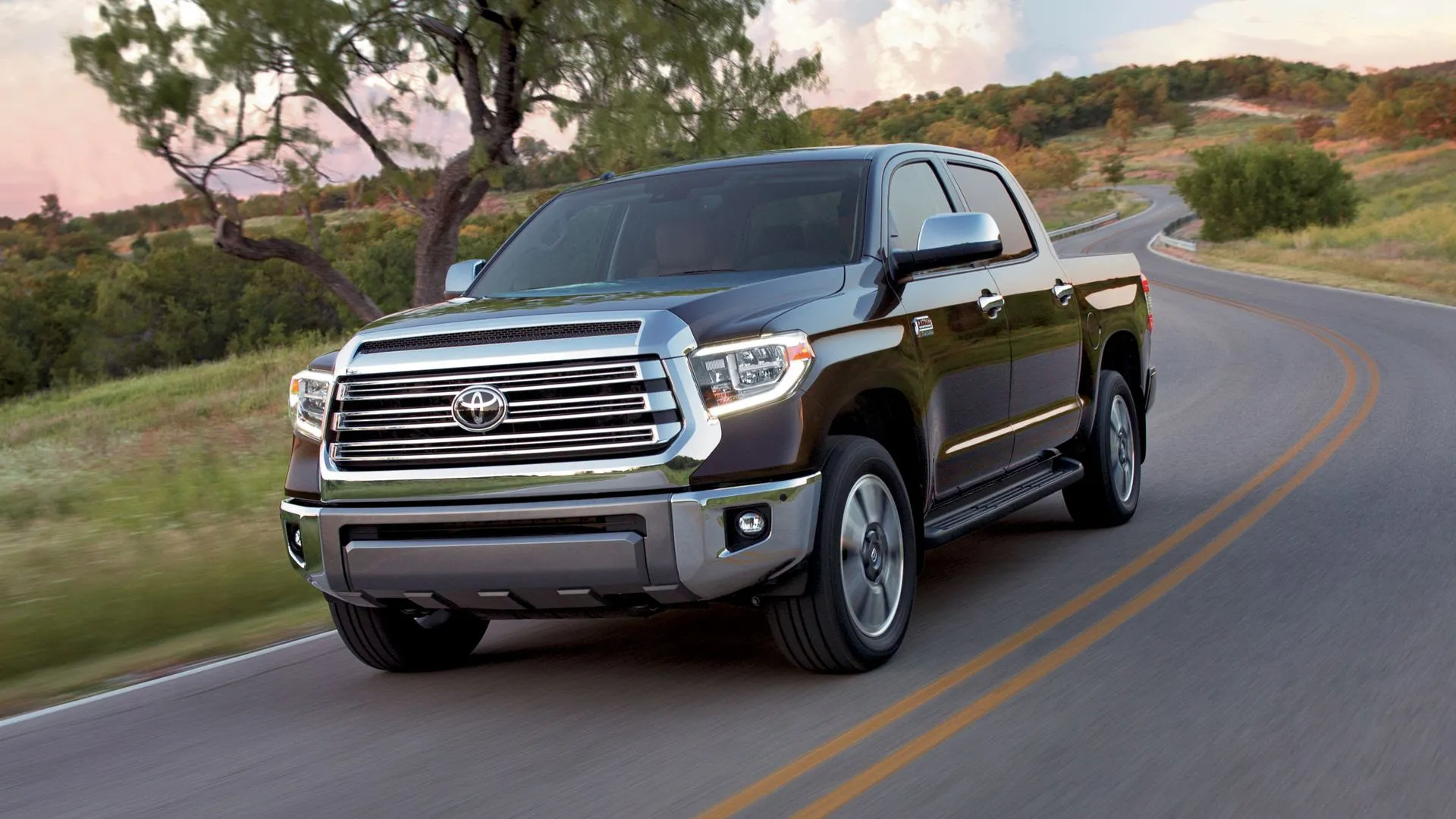
Enhanced seatbelt systems with pre-tensioners and load limiters were also added to further protect occupants during a collision.
The redesigned Tundra also featured advanced driver assistance technologies to enhance safety.
Features such as adaptive cruise control, lane-keeping assist, and automatic emergency braking were introduced to help prevent accidents and mitigate the severity of collisions.
These technologies provided timely warnings and took corrective actions if necessary, enhancing the driver’s ability to avoid potential hazards.
Toyota also improved the Tundra’s braking system to provide more reliable and consistent stopping power.
This upgrade enhanced the vehicle’s control and stability, reducing the risk of accidents caused by inadequate braking performance.
The improved safety features and structural enhancements were rigorously tested to ensure their effectiveness.
The redesigned Toyota Tundra successfully passed subsequent crash tests, earning high safety ratings and restoring consumer confidence in the model.
The improvements made to the Tundra highlighted the importance of addressing safety concerns and continuously enhancing vehicle design to protect occupants.
The Toyota Tundra’s redesign significantly improved its crashworthiness and made it a safer choice for consumers.
The combination of structural reinforcements, advanced safety features, and enhanced braking systems ensured that the Tundra provided comprehensive protection for its occupants, making it a reliable and safe choice for truck buyers.
Also Read: 10 Sleeper Cars That Can Surprise Any Sports Car
5. Chevrolet Malibu (2016)
The 2016 Chevrolet Malibu faced significant safety issues during crash tests, particularly in the small overlap front test conducted by the IIHS.
The vehicle’s structure failed to adequately protect occupants, leading to a poor rating in this critical test.
The shortcomings highlighted the need for structural improvements to enhance occupant protection and prompted Chevrolet to undertake a comprehensive redesign to address these safety concerns.
To improve the Malibu’s crashworthiness, Chevrolet focused on reinforcing the vehicle’s front end and cabin structure.
High-strength materials were used in critical areas to enhance the car’s ability to absorb and dissipate impact forces.
The goal was to minimize cabin deformation and protect occupants from serious injuries in the event of a collision.
The reinforced structure also helped maintain the integrity of the passenger compartment, providing a safer environment for occupants.
In addition to structural reinforcements, Chevrolet introduced advanced safety features to the redesigned Malibu.
The vehicle was equipped with additional airbags, including side curtain airbags that deploy in the event of a side impact or rollover.
These airbags provided critical protection for occupants’ heads and upper bodies, reducing the risk of serious injuries.
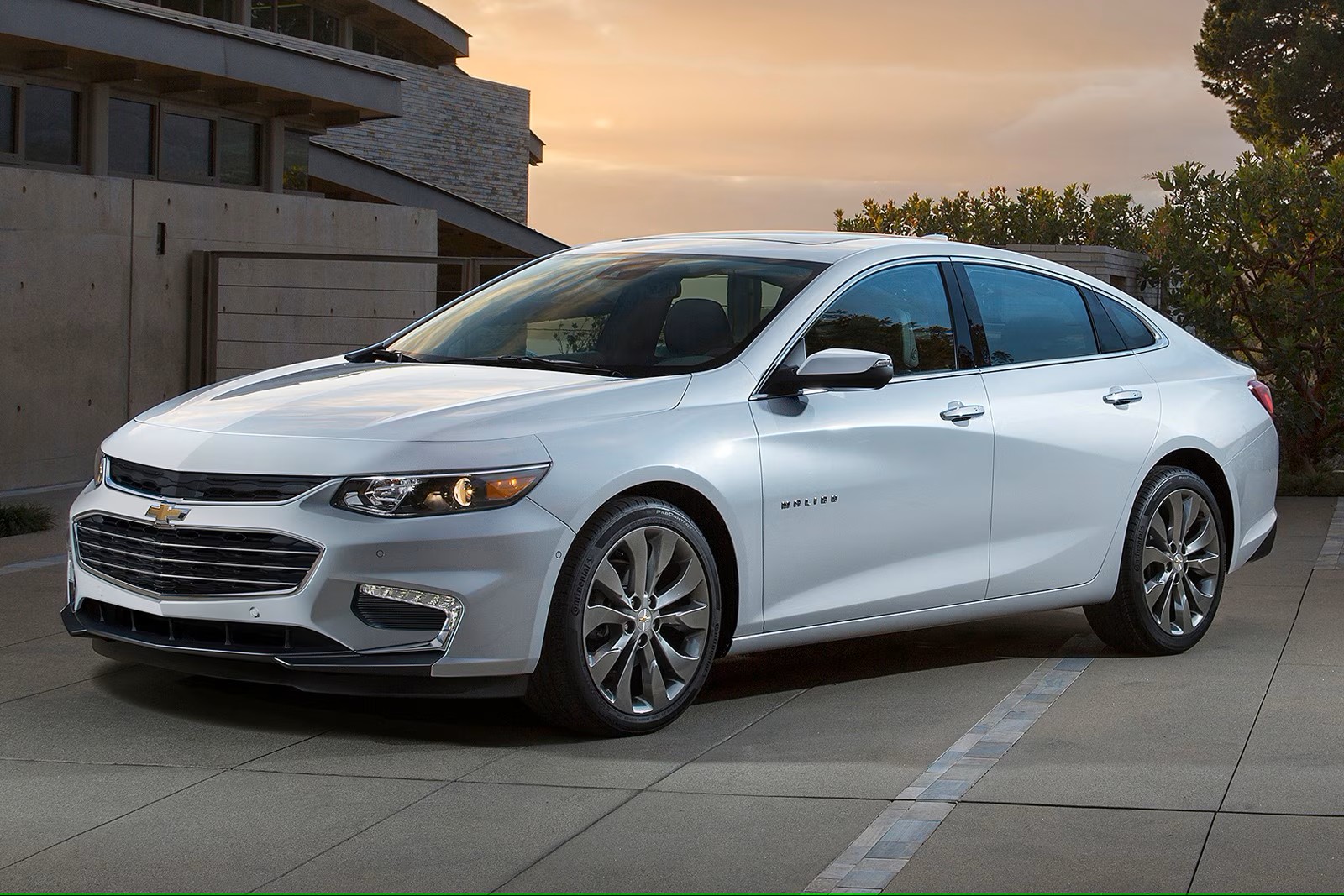
Enhanced seatbelt systems with pre-tensioners and load limiters were also added to further protect occupants during a collision.
The redesigned Malibu also featured advanced driver assistance technologies to enhance safety.
Features such as adaptive cruise control, lane-keeping assist, and automatic emergency braking were introduced to help prevent accidents and mitigate the severity of collisions.
These technologies provided timely warnings and took corrective actions if necessary, enhancing the driver’s ability to avoid potential hazards.
Other safety features of the redesigned Malibu included a multi-angle rearview camera, blind-spot monitoring, and rear cross-traffic alert.
These features enhanced drivers’ awareness of their surroundings and helped prevent accidents.
The vehicle’s stability control system further improved handling and stability, making the Malibu a safer and more reliable choice for consumers.
The improved safety features and structural enhancements were rigorously tested to ensure their effectiveness.
The redesigned Chevrolet Malibu successfully passed subsequent crash tests, earning high safety ratings and restoring consumer confidence in the model.
The improvements made to the Malibu underscored the importance of addressing safety concerns and continuously enhancing vehicle design to protect occupants.
The Chevrolet Malibu’s redesign significantly improved its crashworthiness and made it a safer choice for consumers.
The combination of structural reinforcements, advanced safety features, and enhanced driver assistance technologies ensured that the Malibu provided comprehensive protection for its occupants, making it a popular choice among midsize sedan buyers.
6. Jeep Wrangler (2019)
The 2019 Jeep Wrangler faced significant safety issues during crash tests, particularly in the small overlap front test conducted by the IIHS.
The vehicle’s structure failed to adequately protect occupants, leading to a poor rating in this critical test.
The shortcomings highlighted the need for structural improvements to enhance occupant protection and prompted Jeep to undertake a comprehensive redesign to address these safety concerns.
To improve the Wrangler’s crashworthiness, Jeep focused on reinforcing the vehicle’s front end and cabin structure.
High-strength materials were used in critical areas to enhance the SUV’s ability to absorb and dissipate impact forces.
The goal was to minimize cabin deformation and protect occupants from serious injuries in the event of a collision.
The reinforced structure also helped maintain the integrity of the passenger compartment, providing a safer environment for occupants.
In addition to structural reinforcements, Jeep introduced advanced safety features to the redesigned Wrangler.
The vehicle was equipped with additional airbags, including side curtain airbags that deploy in the event of a side impact or rollover.
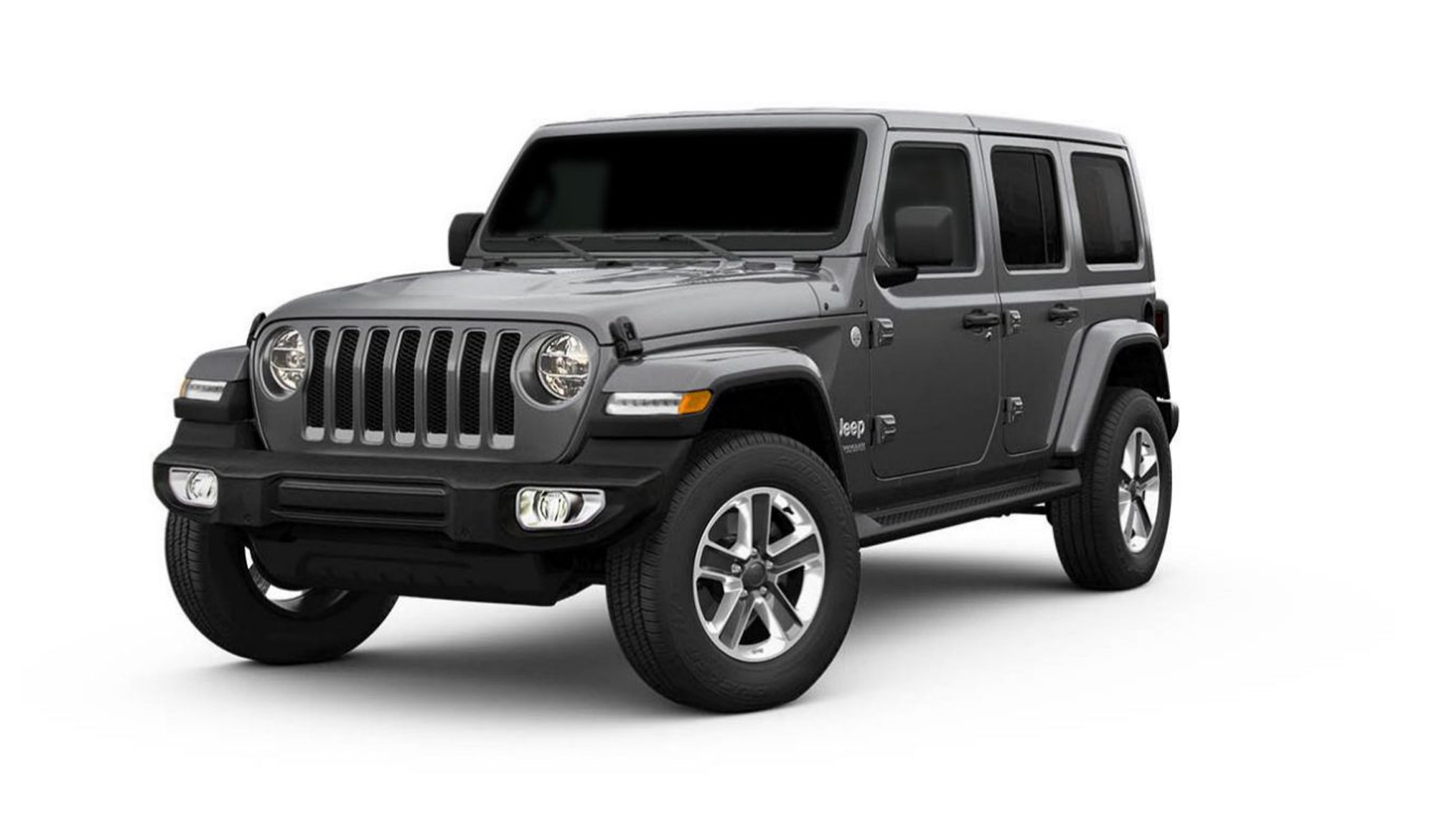
These airbags provided critical protection for occupants’ heads and upper bodies, reducing the risk of serious injuries.
Enhanced seatbelt systems with pre-tensioners and load limiters were also added to further protect occupants during a collision.
The redesigned Wrangler also featured advanced driver assistance technologies to enhance safety.
Features such as adaptive cruise control, lane-keeping assist, and automatic emergency braking were introduced to help prevent accidents and mitigate the severity of collisions.
These technologies provided timely warnings and took corrective actions if necessary, enhancing the driver’s ability to avoid potential hazards.
Other safety features of the redesigned Wrangler included a multi-angle rearview camera, blind-spot monitoring, and rear cross-traffic alert.
These features enhanced the driver’s awareness of their surroundings and helped prevent accidents.
The vehicle’s stability control system further improved handling and stability, making the Wrangler a safer and more reliable choice for off-road enthusiasts.
The improved safety features and structural enhancements were rigorously tested to ensure their effectiveness.
The redesigned Jeep Wrangler successfully passed subsequent crash tests, earning high safety ratings and restoring consumer confidence in the model.
The improvements made to the Wrangler underscored the importance of addressing safety concerns and continuously enhancing vehicle design to protect occupants.
The Jeep Wrangler’s redesign significantly improved its crashworthiness and made it a safer choice for consumers.
The combination of structural reinforcements, advanced safety features, and enhanced driver assistance technologies ensured that the Wrangler provided comprehensive protection for its occupants, making it a popular choice among off-road enthusiasts.
7. Nissan Altima (2013)
The 2013 Nissan Altima faced significant safety issues during crash tests, particularly in the small overlap front test conducted by the IIHS.
The vehicle’s structure failed to adequately protect occupants, leading to a poor rating in this critical test.
The shortcomings highlighted the need for structural improvements to enhance occupant protection and prompted Nissan to undertake a comprehensive redesign to address these safety concerns.
To improve the Altima’s crashworthiness, Nissan focused on reinforcing the vehicle’s front end and cabin structure.
High-strength materials were used in critical areas to enhance the car’s ability to absorb and dissipate impact forces.
The goal was to minimize cabin deformation and protect occupants from serious injuries in the event of a collision.
The reinforced structure also helped maintain the integrity of the passenger compartment, providing a safer environment for occupants.
In addition to structural reinforcements, Nissan introduced advanced safety features to the redesigned Altima.
The vehicle was equipped with additional airbags, including side curtain airbags that deploy in the event of a side impact or rollover.
These airbags provided critical protection for occupants’ heads and upper bodies, reducing the risk of serious injuries.
Enhanced seatbelt systems with pre-tensioners and load limiters were also added to further protect occupants during a collision.
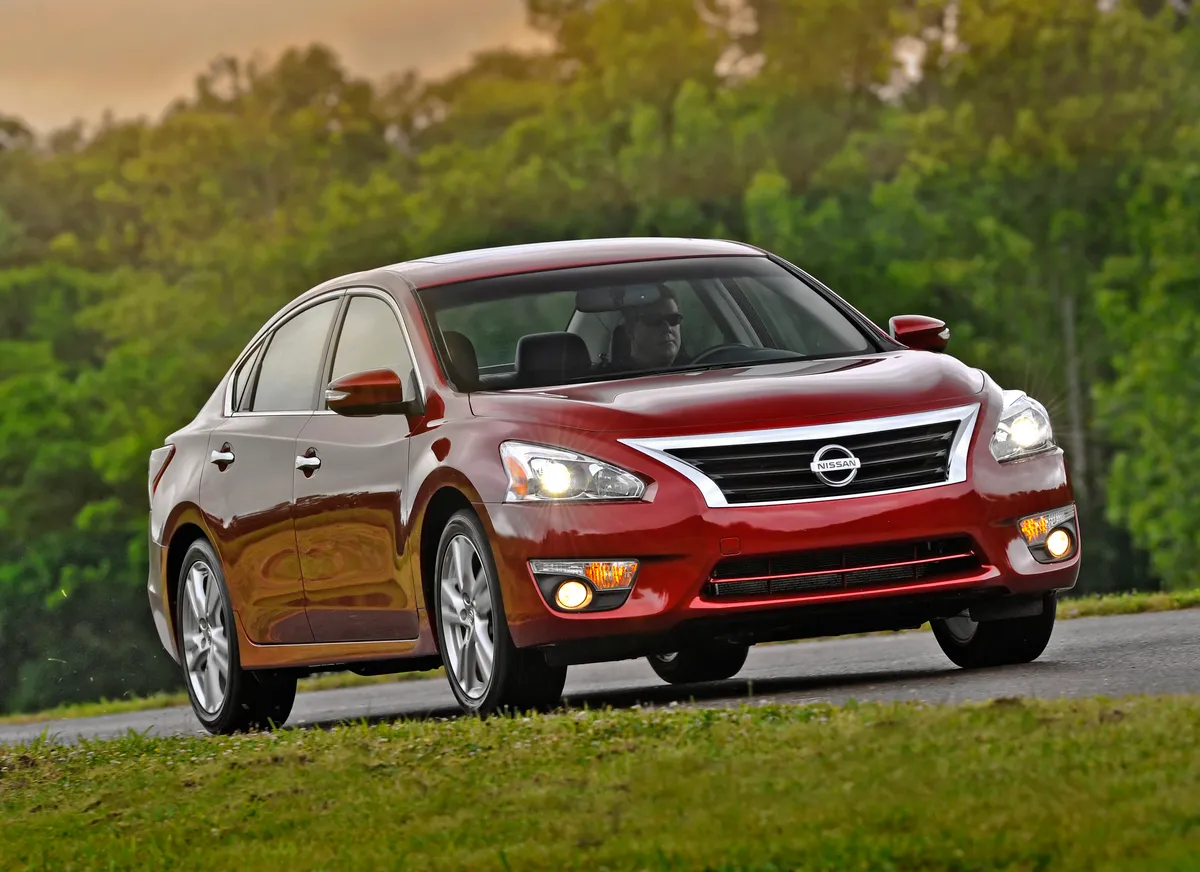
The redesigned Altima also featured advanced driver assistance technologies to enhance safety.
Features such as adaptive cruise control, lane-keeping assist, and automatic emergency braking were introduced to help prevent accidents and mitigate the severity of collisions.
These technologies provided timely warnings and took corrective actions if necessary, enhancing the driver’s ability to avoid potential hazards.
Other safety features of the redesigned Altima included a multi-angle rearview camera, blind-spot monitoring, and rear cross-traffic alert.
These features enhanced the driver’s awareness of their surroundings and helped prevent accidents.
The vehicle’s stability control system further improved handling and stability, making the Altima a safer and more reliable choice for consumers.
The improved safety features and structural enhancements were rigorously tested to ensure their effectiveness.
The redesigned Nissan Altima successfully passed subsequent crash tests, earning high safety ratings and restoring consumer confidence in the model.
The improvements made to the Altima underscored the importance of addressing safety concerns and continuously enhancing vehicle design to protect occupants.
The Nissan Altima’s redesign significantly improved its crashworthiness and made it a safer choice for consumers.
The combination of structural reinforcements, advanced safety features, and enhanced driver assistance technologies ensured that the Altima provided comprehensive protection for its occupants, making it a popular choice among midsize sedan buyers.
8. Hyundai Sonata (2015)
The 2015 Hyundai Sonata faced significant safety issues during crash tests, particularly in the small overlap front test conducted by the IIHS.
The vehicle’s structure failed to adequately protect occupants, leading to a poor rating in this critical test.
The shortcomings highlighted the need for structural improvements to enhance occupant protection and prompted Hyundai to undertake a comprehensive redesign to address these safety concerns.
To improve the Sonata’s crashworthiness, Hyundai focused on reinforcing the vehicle’s front end and cabin structure.
High-strength materials were used in critical areas to enhance the car’s ability to absorb and dissipate impact forces.
The goal was to minimize cabin deformation and protect occupants from serious injuries in the event of a collision.
The reinforced structure also helped maintain the integrity of the passenger compartment, providing a safer environment for occupants.
In addition to structural reinforcements, Hyundai introduced advanced safety features to the redesigned Sonata.
The vehicle was equipped with additional airbags, including side curtain airbags that deploy in the event of a side impact or rollover.
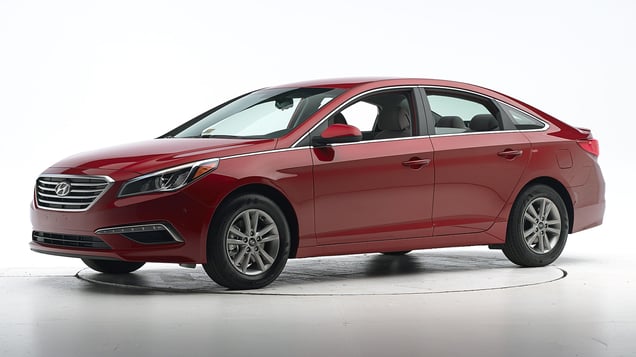
These airbags provided critical protection for occupants’ heads and upper bodies, reducing the risk of serious injuries.
Enhanced seatbelt systems with pre-tensioners and load limiters were also added to further protect occupants during a collision.
The redesigned Sonata also featured advanced driver assistance technologies to enhance safety.
Features such as adaptive cruise control, lane-keeping assist, and automatic emergency braking were introduced to help prevent accidents and mitigate the severity of collisions.
These technologies provided timely warnings and took corrective actions if necessary, enhancing the driver’s ability to avoid potential hazards.
Other safety features of the redesigned Sonata included a multi-angle rearview camera, blind-spot monitoring, and rear cross-traffic alert.
These features enhanced drivers’ awareness of their surroundings and helped prevent accidents.
The vehicle’s stability control system further improved handling and stability, making the Sonata a safer and more reliable choice for consumers.
The improved safety features and structural enhancements were rigorously tested to ensure their effectiveness.
The redesigned Hyundai Sonata successfully passed subsequent crash tests, earning high safety ratings and restoring consumer confidence in the model.
The improvements made to the Sonata underscored the importance of addressing safety concerns and continuously enhancing vehicle design to protect occupants.
The Hyundai Sonata’s redesign significantly improved its crashworthiness and made it a safer choice for consumers.
The combination of structural reinforcements, advanced safety features, and enhanced driver assistance technologies ensured that the Sonata provided comprehensive protection for its occupants, making it a popular choice among midsize sedan buyers.
9. Kia Sorento (2016)
The 2016 Kia Sorento faced significant safety issues during crash tests, particularly in the small overlap front test conducted by the IIHS.
The vehicle’s structure failed to adequately protect occupants, leading to a poor rating in this critical test.
The shortcomings highlighted the need for structural improvements to enhance occupant protection and prompted Kia to undertake a comprehensive redesign to address these safety concerns.
To improve the Sorento’s crashworthiness, Kia focused on reinforcing the vehicle’s front end and cabin structure.
High-strength materials were used in critical areas to enhance the SUV’s ability to absorb and dissipate impact forces.
The goal was to minimize cabin deformation and protect occupants from serious injuries in the event of a collision.
The reinforced structure also helped maintain the integrity of the passenger compartment, providing a safer environment for occupants.
In addition to structural reinforcements, Kia introduced advanced safety features to the redesigned Sorento.
The vehicle was equipped with additional airbags, including side curtain airbags that deploy in the event of a side impact or rollover.
These airbags provided critical protection for occupants’ heads and upper bodies, reducing the risk of serious injuries.
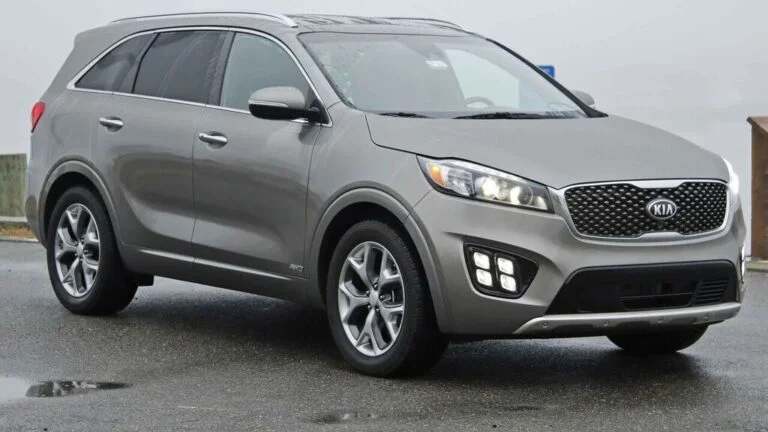
Enhanced seatbelt systems with pre-tensioners and load limiters were also added to further protect occupants during a collision.
The redesigned Sorento also featured advanced driver assistance technologies to enhance safety.
Features such as adaptive cruise control, lane-keeping assist, and automatic emergency braking were introduced to help prevent accidents and mitigate the severity of collisions.
These technologies provided timely warnings and took corrective actions if necessary, enhancing the driver’s ability to avoid potential hazards.
Other safety features of the redesigned Sorento included a multi-angle rearview camera, blind-spot monitoring, and rear cross-traffic alert.
These features enhanced the driver’s awareness of their surroundings and helped prevent accidents.
The vehicle’s stability control system further improved handling and stability, making the Sorento a safer and more reliable choice for consumers.
The improved safety features and structural enhancements were rigorously tested to ensure their effectiveness.
The redesigned Kia Sorento successfully passed subsequent crash tests, earning high safety ratings and restoring consumer confidence in the model.
The improvements made to the Sorento underscored the importance of addressing safety concerns and continuously enhancing vehicle design to protect occupants.
The Kia Sorento’s redesign significantly improved its crashworthiness and made it a safer choice for consumers.
The combination of structural reinforcements, advanced safety features, and enhanced driver assistance technologies ensured that the Sorento provided comprehensive protection for its occupants, making it a popular choice among midsize SUV buyers.
10. Volkswagen Passat (2012)
The 2012 Volkswagen Passat faced significant safety issues during crash tests, particularly in the small overlap front test conducted by the IIHS.
The vehicle’s structure failed to adequately protect occupants, leading to a poor rating in this critical test.
The shortcomings highlighted the need for structural improvements to enhance occupant protection and prompted Volkswagen to undertake a comprehensive redesign to address these safety concerns.
To improve the Passat’s crashworthiness, Volkswagen focused on reinforcing the vehicle’s front end and cabin structure.
High-strength materials were used in critical areas to enhance the car’s ability to absorb and dissipate impact forces.
The goal was to minimize cabin deformation and protect occupants from serious injuries in the event of a collision.
The reinforced structure also helped maintain the integrity of the passenger compartment, providing a safer environment for occupants.
In addition to structural reinforcements, Volkswagen introduced advanced safety features to the redesigned Passat.
The vehicle was equipped with additional airbags, including side curtain airbags that deploy in the event of a side impact or rollover.
These airbags provided critical protection for occupants’ heads and upper bodies, reducing the risk of serious injuries.
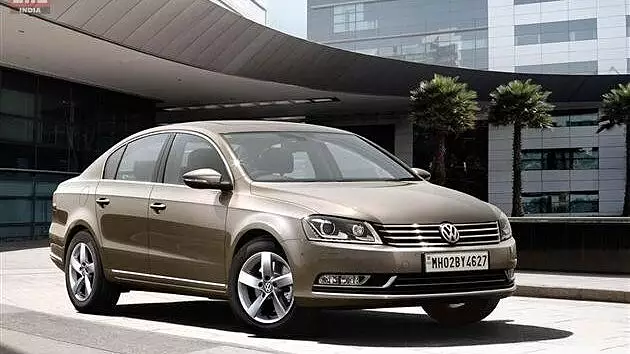
Enhanced seatbelt systems with pre-tensioners and load limiters were also added to further protect occupants during a collision.
The redesigned Passat also featured advanced driver assistance technologies to enhance safety.
Features such as adaptive cruise control, lane-keeping assist, and automatic emergency braking were introduced to help prevent accidents and mitigate the severity of collisions.
These technologies provided timely warnings and took corrective actions if necessary, enhancing the driver’s ability to avoid potential hazards.
Other safety features of the redesigned Passat included a multi-angle rearview camera, blind-spot monitoring, and rear cross-traffic alert.
These features enhanced drivers’ awareness of their surroundings and helped prevent accidents.
The vehicle’s stability control system further improved handling and stability, making the Passat a safer and more reliable choice for consumers.
The improved safety features and structural enhancements were rigorously tested to ensure their effectiveness.
The redesigned Volkswagen Passat successfully passed subsequent crash tests, earning high safety ratings and restoring consumer confidence in the model.
The improvements made to the Passat underscored the importance of addressing safety concerns and continuously enhancing vehicle design to protect occupants.
The Volkswagen Passat’s redesign significantly improved its crashworthiness and made it a safer choice for consumers.
The combination of structural reinforcements, advanced safety features, and enhanced driver assistance technologies ensured that the Passat provided comprehensive protection for its occupants, making it a popular choice among midsize sedan buyers.
Also Read: 10 Pickup Trucks That Have Proven to Be Indestructible and Built for Long-Lasting Performance

